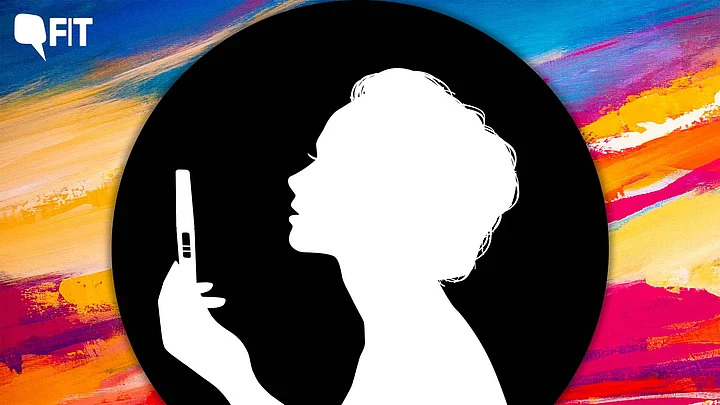(Trigger Warning: Disturbing visuals associated with abortion.)
“Where I am from, people don’t even say the word 'abortion'," says Meenakshi Saxena, who works with the Foundation for Reproductive Health Services India. She goes on to explain how instead they use 'MTP' as a verb.
MTP refers to the celebrated Medical Termination of Pregnancy Act, the law that protects abortion rights in India.
Yes, on paper, the law of the land allows anyone over the age of 18 to opt for abortions up till 20 weeks of gestation. No, the person who is seeking abortion does not need anyone else’s consent.
But in reality, the word and the connotation attached to it are still riddled with taboo, and shrouded in shame and guilt, creating a breeding ground for misinformation.
According to the UNFPA State of World Population Report 2022, between 2007–2011, 67 percent of abortions in India were classified as 'unsafe.'
It also happens to be one of the third leading causes of maternal mortality, with nearly eight women dying from causes related to unsafe abortion each day. This, in spite of the MTP of 1971 legally protecting the right to safe abortions in India.
In such an environment, how the media talks about abortion and reports on stories on abortion – the choice of phrases, and images – permeates the public consciousness and shapes the way abortion is perceived.
Popular Media and Virtue Signalling
“For the public, for the masses, what we see in the media we perceive it as true. Often in the media, they pit abortion against motherhood," says Debanjana Choudhuri, a gender and climate activist based in Delhi.
"In popular movies and serials, if a person is not choosing to give birth, then the pregnant person is seen as against motherhood."
"There are often people around her telling her that it's a crime. These kinds of problematic imagery, problematic components of dialogue, problematic music, problematic emotions are often portrayed and associated with abortion."Debanjana Choudhuri, Gender and Climate specialist
What this does is it dilutes the issue, says Debanjana, adding, "Abortion is a health issue. Abortion is a rights issue."
"If popular media pits abortion as an anticlimax to motherhood, it dilutes the whole narrative of abortion being a healthcare service."Debanjana Choudhuri, a Gender and Climate specialist
'News Media Have a Bigger Responsibility'
There is already so much stigma and taboo around abortion, and there are conflating laws like Protection of Children from Sexual Offences Act, and the Pre-Conception and Pre-Natal Diagnostic Techniques Act, which make for a delicate line to tread on.
The responsibility then on the shoulders of media weighs heavy because of how easy it can be to unwittingly spread misinformation and perpetuate these taboos.
Most of the time, when it comes to news reports, irresponsible imagery and phrasing can mar otherwise well-meaning articles.
Speaking at a workshop conducted by Pratigya Campaign in Delhi on Friday, 23 September, founder and CEO of digital media platform Feminism in India, Japleen Pasricha said the goal should be to make reporting around abortion more neutral, and inclusive.
"The media's responsibility should be to present facts without any judgement. I think the number one responsibility that the media has is to give accurate information."Japleen Pasricha, Founder and CEO, Feminism in India
Guidelines: Do's and Don'ts for Reporting
The experts FIT spoke to, as well as the larger sphere of safe abortion advocacy groups within the feminist movement encourage these good practices when it comes to reporting on, or presenting stories on abortion.
Don't use words like 'mother,' or mother-to-be while referring to someone seeking or considering abortion.
Instead, use neutral terms like 'abortion seeker.'
Avoid using the word 'woman' or 'pregnant women.'
Instead adopt more inclusive language like 'pregnant person,' or 'women, trans men, and nonbinary people.
Don't use the word 'baby' to refer to an unborn foetus.
Instead, use the word foetus.
“What is in the womb is a foetus. It is not a baby till it is born. You cannot call yourself ‘pro-life’ if you are giving life to the foetus and not giving life, valuing the life of the individual, the pregnant person who wants to make a choice.”Debanjana Choudhuri, Gender and Climate specialist
Don't use phrases like 'abort a baby,' and 'kill a baby.'
"We do not want to give a personal toll to the readers and that is also how it is medically accepted," adds Pasricha.
Do include a trigger warning and outreach options at the beginning of the piece, especially when discussing rape, violence or mental health issues.
Do not use 'female foeticide' or 'foeticide' in a story about abortion.
"That is not what is happening here. Female foeticide is a completely different issue and it should not be compared to abortion because it would again stigmatise abortion," says Pasricha.
As far as Imagery Is Concerned,
Don't show a pregnant person with a baby bump.
"Medical abortion, especially which is done by pills, happens in the first trimester. At that time, any pregnant person is not showing a baby bump. So using heavily pregnant images for abortion is detrimental to the message of abortion because the whole idea is that this person does not want a pregnancy."Japleen Pasricha, Founder and Editor, Feminism in India
Don't show very sad or distraught pregnant persons.
Instead opt for neutral expressions or silhouettes.
Don't show hangers, scissors, or other violent imagery associated with abortions.
Instead show pills. Pills are the most convenient and non-invasive abortion technique in the first trimester.
Do show people from diverse socio-economic and ethnic backgrounds.
"We have a very standard image of how a woman looks like. It is good to represent intersectionality and diversity of people who are accessing abortion."Japleen Pasricha, Founder and CEO, Feminism in India
(On 29 September, the Supreme Court ruled that all women are entitled to safe abortions under the MTP Act 2020, irrespective of their marrital status. FIT is republishing this story in light of the historic ruling.)

